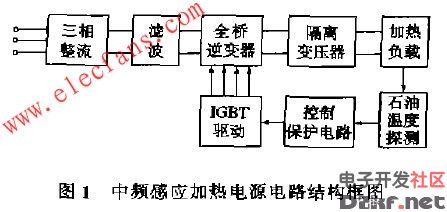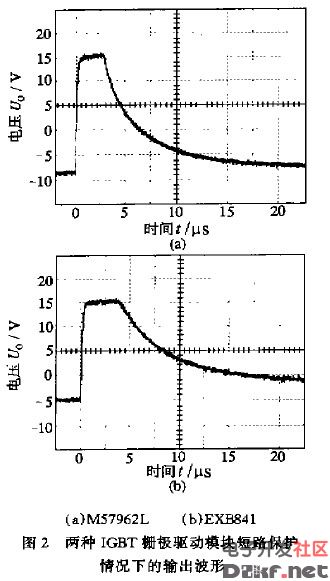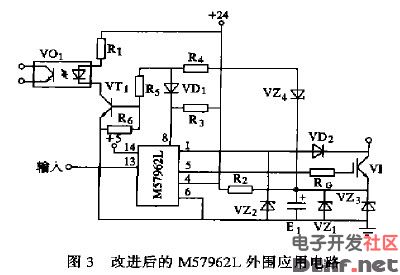1. Introduction
In the current domestic power supply system, the hollow sucker rod induction heating system typically uses a power frequency induction heating method. To balance three-phase power, the power frequency heating power supply superimposes one phase of the three-phase AC through a reactor and capacitor to the other two phases, then transforms it into suitable heating conditions via a transformer. This setup is connected to the heating conductor using single-phase AC. However, this method is expensive, bulky, and inefficient.
The oil medium frequency induction heating power supply utilizes IGBTs as inverter switching devices, reducing the size by 40% and weight by 50% compared to traditional power frequency systems.
2. Medium Frequency Induction Heating Power Supply
Figure 1 illustrates the circuit structure of the medium frequency induction heating power supply. The three-phase rectifier converts the power frequency three-phase AC into DC, which is then filtered and converted into adjustable intermediate frequency AC by a full-bridge inverter. This AC is sent to an isolation transformer to heat the load. The full-bridge inverter employs a PWM zero-voltage switching circuit, offering low switching loss and minimal electromagnetic interference [2]. The control circuit uses the SG3524 integrated block to adjust the 9-pin voltage, ensuring a proper dead time for the output signal. A petroleum temperature sensor modulates the pulse width of the output signal, maintaining the oil temperature between 45°C and 70°C. Too high a temperature can alter the chemical properties of the oil, while too low a temperature reduces its fluidity.

3. IGBT Gate Drive Circuit
3.1 Selection of IGBT Gate Drive Module
IGBT gate drive modules such as EXB841 and M57962L are suitable for driving 1200V series 400A IGBT modules, offering overcurrent detection and protection. Under short-circuit conditions, the output waveforms of these modules are shown in Figure 2. The EXB841 generates a fixed 5V negative bias internally, while the M57962L uses an external Zener diode to produce a 9V negative bias, resulting in higher gate reliability. Additionally, the M57962L has a faster protection response time (6.3μs) compared to the EXB841 (16μs), with the latter failing to reduce the gate voltage below 2V, increasing the risk of IGBT failure. Therefore, the M57962L is recommended.

3.2 Improvement of the Drive Module’s Peripheral Circuit
When the IGBT turns off, the collector-emitter voltage rise rate can reach up to 30,000V/μs, causing significant displacement current and collector pulse surge current, potentially leading to dynamic instability in the IGBT. To prevent this, a negative bias must be applied to the IGBT gate [3]. However, in practice, two scenarios may cause the loss of the negative bias: 1) the Zener diode shorts out; or 2) the drive circuit loses +24V power. To address these issues, the author improved the peripheral circuit of the M57962L based on the manufacturer's recommendation, as shown in Figure 3. Under normal operation, VZ4 is activated, keeping the M57962L pin 8 high and VD1 off, allowing VT2 to conduct and VO1 to operate in a low-impedance state. If VZ1 or VZ3 shorts, VZ4 turns off, VT1 stops conducting, and VO1 enters a high-impedance state. Similarly, if the drive circuit loses +24V, no current flows into VO1, and it also enters a high-impedance state.

4. IGBT Module and Filter Capacitor Connection
The IGBT input characteristics resemble those of a MOSFET, with high input impedance. If the drive circuit loses power, the gate of the IGBT loses its negative bias, making it highly susceptible to interference. This can lead to both upper and lower IGBTs turning on simultaneously, allowing energy stored in the filter capacitor to discharge directly through them, potentially damaging the module. To avoid this, the induction heating power supply first powers on the control and drive circuits before connecting the IGBT module to the filter capacitor. When turning off, the IGBT module is disconnected from the capacitor first, followed by the shutdown of the control and drive circuits.
5. Test Results and Conclusion
The oil-assisted induction heating power supply has been operating normally since the field test at the second testing plant in June 1997, with a power rating of 3588kW. This technology is not only applicable to the hollow sucker rod induction heating system but can also be used in the medium frequency induction electric heating systems of gathering pipelines in complex small fault block oilfields. Its implementation significantly reduces capital investment and operational costs, making it a valuable solution for modern oilfield applications.
Car Battery Test Pen ,Car Battery Tester ,Digital Circuit Test ,Electric Circuit Test
YINTE TOOLS (NINGBO) CO., LTD , https://www.yinte-tools.com